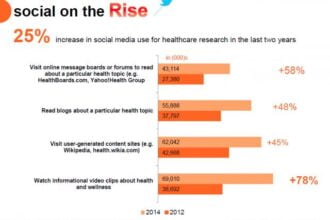A version of what follows appeared at the Health Affairs Blog and was based on a paper I wrote with Gerald Musgrave and Devon Herrick. Go to the web site of the Detroit Medical Center (DMC) and you will learn that DMC facilities rank among the “nation’s best hospitals” by U.S. News & World Report and that they have won other awards. The DMC has some of the “best” heart doctors; it is “tops” in cancer care; and it ranks among the “nation’s safest hospitals.” Three of its hospitals, for example, meet Leapfrog standards (only one other Michigan hospital system does so, you will be told) and two have received Leapfrog’s “top hospital” award (no other Michigan hospital, the site says, made the list). Lest you doubt that the Detroit Medical Center is competing for patients based on quality, the site informs you that the DMC “is dedicated to staying ahead of the crowd when it comes to the quality of our care.” The language clearly implies you’re risking your life if you patronize a competitor. “If you want a hospital with walking trails or a day spa, go someplace else,” the site advises. “Just don’t expect the latest in patient safety technology. Because 100-percent medication scanning is only at DMC.” Several questions naturally arise. Why aren’t more U.S. hospitals competing for patients in the same way the DMC does? Why isn’t the DMC competing even more aggressively? Some hospitals in India, Thailand and Singapore, for example, disclose their infection, mortality and readmission rates and compare them to such U.S. entities as the Cleveland Clinic and the Mayo Clinic. Clearly the DMC is competing on the time price of care. It even has a 72 hour guarantee on MRI scans (yes, they’re available on Saturdays and Sundays). But why doesn’t it also compete on the money price of care by posting fees patients can expect to pay?
All you do is treat me bad. Break my heart and leave me sad.
How We Pay for the Three Dimensions of Care. Think of health care as having three dimensions: a quantity dimension (e.g., the units of service third-party payers typically pay for, such as office visits, diagnostic tests, etc.), a quality dimension (e.g., such factors as lower infection, mortality, and readmission rates, etc.) and an amenities dimension. By increasing the quality of care and the amenities surrounding that care, providers can make their basic services more attractive to patients, provided they have an incentive to do so. As in the market for other goods and services, people pay for care with both time and money. What makes health care unusual, is that for most patients, the time price of care is a greater burden than the money price of care – since third-party payers pay all or almost all of the provider’s fee. For primary care, emergency room care, ancillary services and increasingly for many traditional hospital services, time is the principal “currency” patients use to purchase health care the United States, just as it is in other developed countries. Market Equilibrium. In a third-party payment system, the provider’s fee, including the money price paid by the patient, tends to be set by an entity outside the doctor-patient relationship. For a given unit of service and a given total fee, that leaves a time price, quality and amenities. Of these three variables, however, only two are typically visible or inferable. The quality variable is normally hidden. As patients respond to what is visible and move back and forth among providers, there will be a tendency toward uniform wait times and uniform amenities. (Think of these as the market clearing time price and the market clearing level of amenities.) Or, if there is a trade-off between waiting and amenities, the rate of substitution will tend to be uniform. There are no natural equilibrating forces bringing about uniform quality of care, however. As long as quality differences remain invisible, they can persist without affecting the patients’ demand for care. This is consistent with the findings that the quality of care varies considerably from provider to provider and facility to facility, as well as the discovery that variations in the quality of care delivered are unrelated to the kind of insurance people have or even whether they are insured at all. (Note, however, that most measures of quality are measures of inputs, not outputs; that at least one study finds there is little relationship between these inputs and such outputs as reduced mortality; and some have questioned whether even hospital mortality rates are reliable indicators of quality.) Effects on Quality of Care. Lack of quality competition is in part the result of certain characteristics of health care quality. What we call “core quality” is not a variable at all. It is the result of other decisions made by the providers. Since the vagaries of medical practice are many and since the decision calculus of doctors will often differ, this allows for considerable quality differences. Beyond this core level, quality improvement is a decision variable and improvements are costly. However, since it is difficult and costly for patients to secure quality data on their own, information about quality typically comes only from the providers. Such communications are unlikely, however, unless providers by means of quality improvements are able to shift demand (and, therefore, revenue), sufficient to pay for those improvements. In general, this is not the case.






